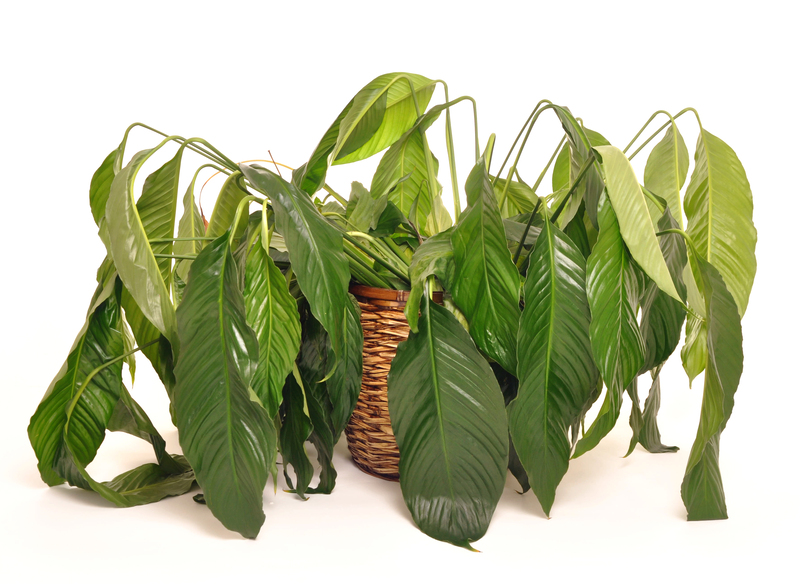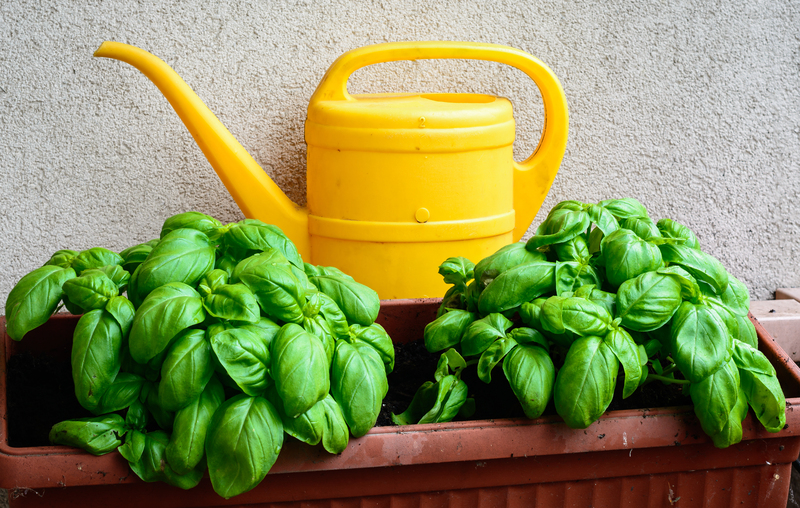Three Crucial Tips for Managing Weeds with Ease
Posted on 18/09/2025
Three Crucial Tips for Managing Weeds with Ease
Weeds are the persistent adversaries of every gardener, lawn enthusiast, and landscaper. Their fast-growing nature, prolific seeding, and ability to thrive in almost any condition make them a challenging problem to solve. However, with the right knowledge and strategies, managing weeds can become a manageable - even easy - task. In this comprehensive article, you'll discover three crucial tips for tackling garden and lawn weeds, each designed to help you keep your outdoor space healthy, beautiful, and under control.

Understanding the Challenge: Why Weed Management Matters
Before jumping into practical weed control techniques, it's important to understand why weed management is essential:
- Weeds compete with desired plants for water, sunlight, nutrients, and space, often outcompeting flowers, vegetables, and grasses.
- Uncontrolled weed growth can harbor pests and plant diseases.
- Weeds can rapidly spread, overtaking lawns and garden beds if neglected, diminishing curb appeal and property value.
Given these consequences, controlling weeds effectively is not just about looks--it's about safeguarding the health and productivity of your plants.
1. Embrace Preventative Strategies to Stop Weeds Before They Start
The most effective way of managing weeds is to prevent their growth in the first place. Prevention requires less effort than removing established weeds and lays the groundwork for a healthy, low-maintenance landscape. Here's how to integrate weed control prevention techniques into your gardening and landscaping routine:
Mulching: Nature's Defense Against Weeds
- Apply a generous 2-3 inch layer of organic mulch (such as shredded bark, leaves, straw, or compost) around your flowers, vegetables, and shrubs.
- Mulch blocks sunlight from reaching weed seeds, preventing germination and stifling growth.
- As organic mulch decomposes, it enriches your soil, encouraging the development of strong, competitive garden plants.
- Inorganic mulches such as landscaping fabric or stones are particularly effective in low-maintenance play areas and paths.
Maintain Thick, Healthy Lawns and Gardens
- Dense planting crowds out emerging weeds by limiting available light and space.
- Seed bare soil quickly to prevent opportunistic weeds from moving in.
- Use ground covers and fast-spreading perennials to suppress weed growth in ornamental beds.
Use Barriers
- Landscape fabric installed beneath mulch or gravel can dramatically reduce weed emergence in garden beds, paths, or under decks.
- Check the fabric regularly for signs of weed growth above or below the surface and address any issues.
Spot Early Invaders and Remove Immediately
- Conduct regular garden "scouting" to spot and remove new weeds before they can establish and set seed.
- This method--sometimes called "grubbing out"--is a cornerstone for effortless, long-term weed management.
Prevention is the cornerstone of simple weed management: by setting up your landscape to resist weeds, you'll save yourself countless hours of labor later.
2. Master Efficient, Sustainable Weed Removal Techniques
Despite your best prevention efforts, some weeds inevitably sneak through. Knowing how to remove them efficiently and responsibly is the second key to controlling unwanted plants in your lawn and garden.
Hand Pulling: Timeless and Effective
- For small gardens or isolated weeds, hand pulling is the gold standard--especially after rain, when the soil is soft and roots release easily.
- Grasp weeds at the base and pull slowly and steadily to extract as much root as possible; broken roots can lead to regrowth.
- Wear gloves to protect your hands, especially when dealing with thorny or allergenic species.
Weed Digging Tools: Make the Job Easier
- Specialized weeders, hoes, and trowels can cut or extract deep-rooted weeds (like dandelions and thistles) with minimal soil disturbance.
- Choose an ergonomic tool that matches your weed problem and physical abilities.
Don't Let Weeds Go to Seed
- Prompt removal before flowering is critical. Some weeds can produce hundreds or thousands of seeds in a single season, perpetuating your weed problem for years.
- If removal is impractical, at minimum, cut off flower heads with garden shears to prevent seed dispersal.
Stubborn Perennials and Rhizomes
- Some weeds (like bindweed and Bermuda grass) spread with underground runners. For these, full root removal is essential.
- Smothering persistent patches with thick cardboard topped with mulch is an eco-friendly and effective method.
Smart Approaches to Herbicide Use
- Reserve chemical herbicides for situations where manual or organic methods are ineffective, or for large infestations.
- Apply targeted treatments, following label instructions exactly, to minimize risk to desired plants, pollinators, and the environment.
- Consider organic weed killers (such as horticultural vinegar or fatty-acid sprays) when possible.
Consistent, careful weed removal is essential. Stay vigilant, and you'll keep your property looking its best year-round.
3. Build a Long-Term Weed Management Plan
For truly effortless weed control, you need a plan that not only reacts to weeds but anticipates and prevents their future return. A successful long-term strategy doesn't just rely on one method--it combines cultural, physical, and (when needed) chemical controls for comprehensive results.
Understand Your Weeds
- Identify the main weed types invading your garden: annuals, biennials, or perennials.
- Understanding weed biology makes it easier to select the best times and techniques for removal.
- Use online resources or local extension offices for weed identification help.
Monitor and Adjust Your Approach
- Keep a gardening journal to note when new weeds appear, where they thrive, and which removal methods work best.
- Year-to-year patterns can help you fine-tune your weed management plan.
Embrace Integrated Weed Management (IWM)
- IWM is about combining tactics--mulching, dense planting, manual removal, and chemical controls as needed--to stay one step ahead of weed growth.
- This layered approach prevents weeds from adapting to a single "attack."
- Routine maintenance--mowing, edging, reseeding, and pruning--will minimize open soil and reduce weed opportunities.
Timing Is Everything
- Many weeds thrive in spring or fall. Target these periods for the most aggressive management.
- Don't ignore weeds during dormant seasons - early intervention is always easier and more effective than late action.
Continuous learning and adaptation are key to long-term success. Each year brings new challenges, but persistence pays off.

Additional Tips and Best Practices
- After weeding, always dispose of plants (especially those with seeds) in the trash, not compost, to avoid spreading them further.
- Regularly sharpen and clean garden tools to reduce disease transmission and improve efficiency.
- Install physical edging between lawns and garden beds to keep turf grass (and weeds) from creeping in where they're not wanted.
- Encourage pollinators and biodiversity: Healthy gardens resist weeds naturally. Diverse flower beds invite helpful insects that compete against or consume weed pests.
- Water wisely: Focus irrigation at the base of your plants, not the open ground, to avoid creating inviting conditions for weeds to sprout.
Conclusion: Make Weed Management Effortless
Effective weed control doesn't have to mean endless work or harsh chemicals. By embracing these crucial tips for managing weeds with ease--prevent, remove, and plan ahead--you'll create an outdoor space that remains vibrant and largely weed-free with minimal effort.
Remember: The most successful gardeners and landscapers aren't those who react to weeds, but those who make weeds unwelcome from the start. Adopt a proactive strategy. Arm yourself with knowledge. And let your healthy, thriving plants do the rest.
Looking for more tips on lawn care and landscape management?
Subscribe to our newsletter for regular advice and the latest gardening insights!
Quick Summary: Three Keys for Effortless Weed Management
- Prevention is paramount - Mulch, plant densely, and deny weeds the chance to take root.
- Remove weeds early and often - Don't wait for seeds to spread. Use the right technique for the right weed.
- Plan for the long haul - Observe, adapt, and combine methods for lasting control and a beautiful outdoor space.
If you implement these tips, managing weeds will become just another simple, satisfying part of your gardening routine, not a dreaded chore.



